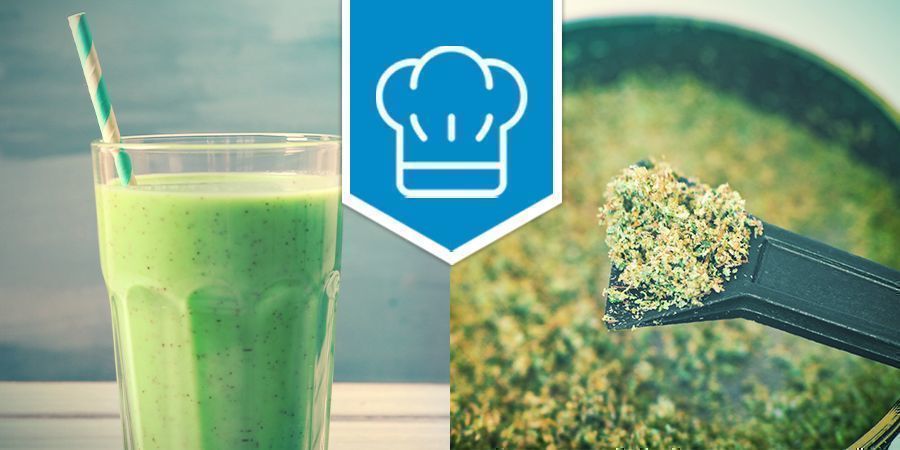What To Do With The Male Cannabis Plant?
The male marijuana plants are much maligned but they have their own special worth. Before binning your next males the moment they sex. Maybe consider their usefullness and get the most out of your males.
WHAT TO DO WITH MALE CANNABIS PLANTS
The male cannabis plant is much maligned and often misunderstood. Most growers will identify and terminate male plants on sight, which is fair and reasonable in a sinsemilla garden. However, before uprooting those males the moment their balls are showing, you may wish to consider these following few things that might pleasantly surprise you.
Although not typically as resinous as sinsemilla females, fully developed males still carry an enticing spectrum of cannabinoids. And you will get a lot, we repeat, a lot of pollen from a male plant if left to grow to completion. Male plants also grow quicker and taller and mature faster than females.
There is often a silver lining on what could be considered a bad situation. If you are unlucky enough to find that every seed in your regular seed purchase has gone male, don't freak out and trash the lot. Treat them like a sinsemilla crop and be amazed at the amount of pollen you can grow. And yes, pollen can get you stoned!
CANNABIS SEXUALITY
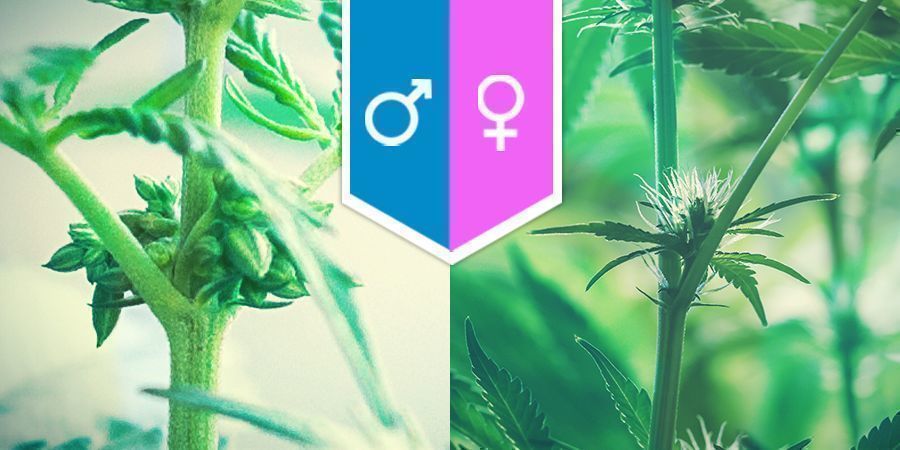
Cannabis is a dioecious species, meaning that unlike 80% of plant species on earth, marijuana has separate male and female plants. Hermaphrodites can occasionally occur though, especially when subjected to environmental stresses or growing in poor soils. Hermaphroditism often ensures survival in harsh conditions. However, continued self-pollination can lead to deterioration in overall health over a number of generations.
Characteristics passed on by parent plants make continually adapting progeny that have the best attributes of both. Each generation becomes more adept at surviving. In nature, this will eventually lead to landraces, particular to specific regions. Although not well documented, some strains that have been bred from other purely indoor strains do prefer indoor growth. Counter intuitively, some hybridised species refuse to grow better outside, even in a hospitable climate.
Male plants produce copious amounts of fine pollen that are spread by the wind. The pollen sacs are made up of five yellowish-white petioles, which protect the anthers inside that carry the pollen on their surfaces. When mature, the pod pops open and the swollen anthers release their pollen. Female plants have receptive pistils that are covered in sticky resin, allowing them to catch the fine pollen. Once pollinated, the pistils dry, die back and the seed begins to form. After as little as six weeks, the seeds will be ready and visibly splitting the calyx open.
HASHISH & CONCENTRATES
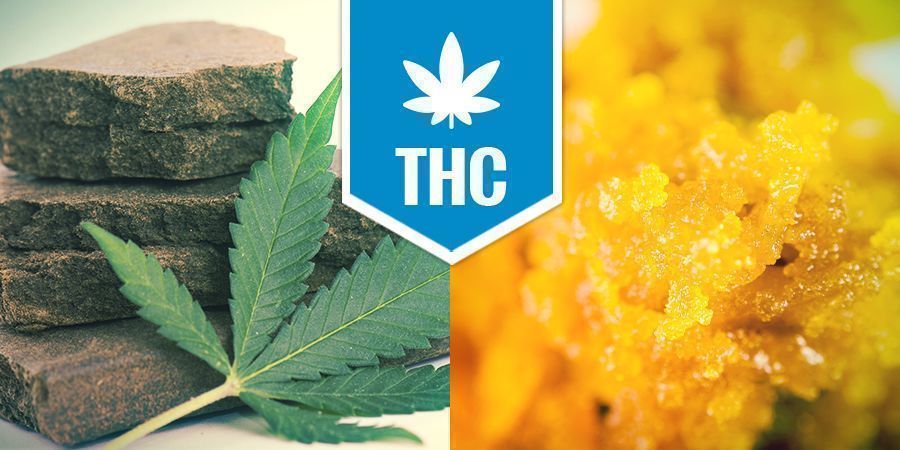
Usually, a cannabis plant will produce over 50% males in any crop, but some very productive species can produce as much as 75-90% males. Nature must have a reason for the prolific need for males, considering they release enough pollen per plant to fertilize fields of females. Let's look at this pollen.
As with female plants, the reproductive organs of male plants contain more cannabinoids than the rest of the plant. Stalked glands cover the tepal and many stalked glands cover the stamen filament itself. Large sessile glands are found in grooves running down each side of the anther, packed in between with grains of pollen. When the flower pod ruptures the resin falls away with the rest of the pollen. Like with female flowers, strain plays a pivotal role in the potency of male flowers. Pollen that has been dried and pressed in a pollen press or treated like any other resin extraction will provide a satisfactory buzz for anyone. Males are not short on cannabinoid content.
Interestingly, during the vegetative phase of growth, males exhibit higher concentrations of THC in the leaves than females and it is only during the adult stages that females develop a higher ratio of THC. The ability to be able to create sinsemilla is the absolute domain of females and gives them the edge in resin production. Males have a limited lifespan and unfortunately there are no known techniques to enhance resin production and delay pollination in males. They are what they are.
BREEDING & EVOLUTION
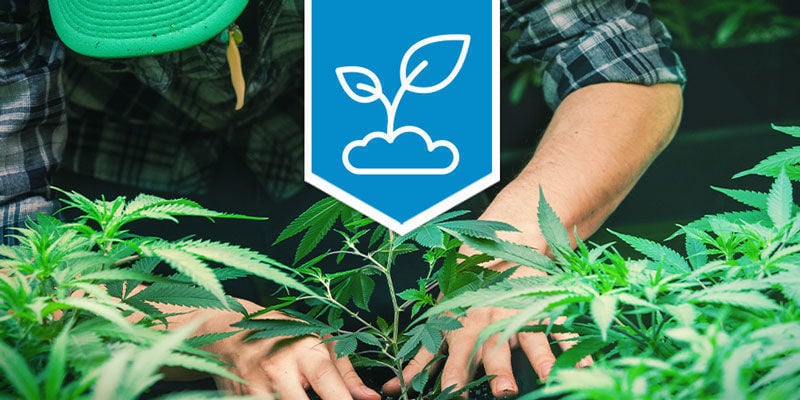
Traditionally, males are needed for breeding and the continuation or blending of desired traits. Breeding is used to develop new strains or to maintain the integrity of existing favourited strains. Breeding can also be used to acclimatise preferred strains to specific regions when grown outdoors. Line breeding, back breeding and other homozygous tricks can be used to accelerate or force evolution, sometimes creating new and interesting traits, sometimes creating strange mutants that don't even behave like cannabis.
There is no need to panic if there are males in your garden. If you are planning on breeding you may want to let the selected males grow some to sense their characteristics. Flowers take quite a few days to develop to the point where they will pop open. Extending the growth time by plucking off early ripening flowers gives the canny grower a decent window where there is no risk of pollination.
With enough grow room space male mothers can be kept in reserve while their clones are producing pollen. Separately cloned females are usually pollinated using a selection of several males, after which ensuing cannabis seeds are grown and flower quality is evaluated. Fathers and mothers are then selected for seed production. Even in a small space, a reasonable breeding program can be set in motion; cannabis can be very functional at a very small size. There is also no need for strapping adult plants. Cannabis plants no taller than your thumb will provide enough male and female plant organs to breed.
Atypical females are turned into males during the flowering period and are used for cross breeding or line breeding, spraying gibberellic acid or colloidal silver on the female flowers daily. This is the process in which feminized seeds are created. Feminized seeds, although a touch expensive, are becoming far more popular since they guarantee female progeny every time.
JUICING & COOKING
Vegetating cannabis, whether male or female, share the same characteristics in their healthful benefits. All the acid profiles are the same and both are rich in phenols and antioxidants. Juiced leaves are a favourite tonic for many and he human organism responds well to raw, deep green foods. Everything on the cannabis plant can be juiced except the heavy branches and thick stalks which are mostly fibre.
If using pollen first carboxylate your stash the same way you would buds. As with female flowers, activated pollen is stronger once treated and will be ready to cook with. Any cannabis recipe can use pollen in place of dried flowers, with oils and butter being so prevalent in canna-cooking it is often easiest to go straight there. Then, you are ready for cooking at any time.
Dried pollen is great for cooking and can be measured like flour, cooking its cannabinoid benefits are straight into foodstuffs. Treat pollen like low potency kief but be careful; it is so fine that a sneeze will certainly billow a cartoonish cloud of fine dust all over your kitchen. If you have made extractions to use in your baking, simply use more pollen oil to make up for potency.
FINE FIBRE & BETTER VALUE
When cannabis is grown as hemp the male plants become the real stars of the show. It is the male plants in mixed crops that are singled out for use in finer cloths like linen for beds, tablecloths and handkerchiefs. The females are used for coarser applications like rope and canvas. Males were intentionally separated, grown, harvested and decorticated independently of females.
Without pollination there is a substantial reduction in the commercial value of the crop as much of that value lies in the seeds. Cannabis seeds have a multitude of purposes and are highly valued in industry and as food. 80% of the total weight of a commercial hemp crop will consist of seeds. Without males, there would be no pollination.
CANNABIS AS COMPANION PLANT
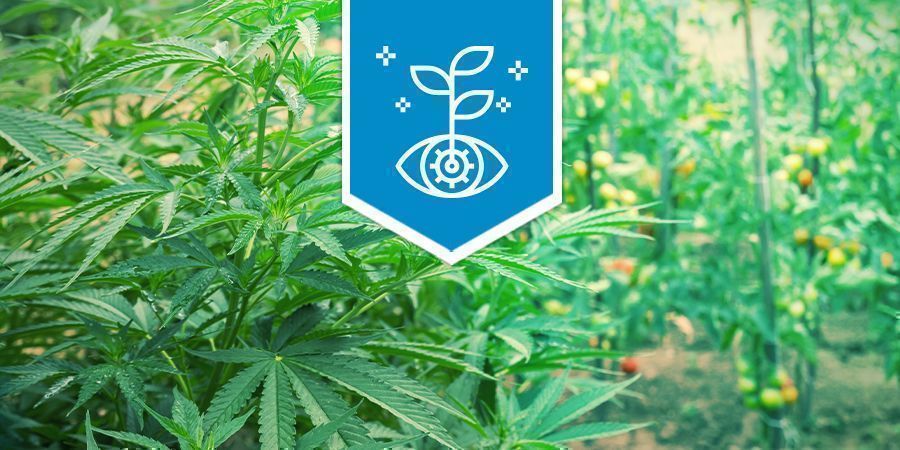
As a companion to humans, cannabis has innumerable benefits. Fibre, fuel, medicine, the list is longer than this article. Grown around the home, cannabis repels pests like flies and mosquitoes. Even teas made from the leaves and flowers make ideal sweet-smelling personal insect repellents. Poultices made from the leaves hold anti-inflammatory properties and significantly reduce bruising.
As a companion to other plants, cannabis was often grown around other crops for its pest repelling abilities. It was even once called ditch-weed because it grew so rampantly near water channels, drainage ditches and culverts. As it grows so rapidly cannabis chokes out many unwanted weed species like noxious chickweed and will repel several species of deadly nematode.
Cannabis also prevents a number of air and soil born pests from attacking popular commercial crops like cotton (cotton worms), potatoes (potato blight fungus and cyst nematodes) and cabbages (cabbage caterpillars). Males, like females, produce a substantial amount of terpenes. Limonene and pinene particularly are known for their pest-repelling qualities.
Its deep tap root and broad root mat are favoured for their ability to break up and aerate poor soils. Used as an intercrop or on fallow fields, cannabis enhances soil friability and water penetration, the dense foliage cover providing a heavy layer of vitamin-rich mulch as the plants age.
-
 5 min
18 September 2023
Landrace Strains: The Oldest Cannabis Strains
Landraces can be traced back many centuries to their respective continents and countries. Still, it wasn't until fairly recently that these strains were exported and became the backbone of the...
5 min
18 September 2023
Landrace Strains: The Oldest Cannabis Strains
Landraces can be traced back many centuries to their respective continents and countries. Still, it wasn't until fairly recently that these strains were exported and became the backbone of the...
-
 5 min
12 November 2021
Spotting Male And Hermaphrodite Cannabis Plants Early
There's a lot to know when growing cannabis, and identifying the sex of your plants early, and accurately, is one of the best ways to ensure a satisfying crop. Here we'll look at males, true...
5 min
12 November 2021
Spotting Male And Hermaphrodite Cannabis Plants Early
There's a lot to know when growing cannabis, and identifying the sex of your plants early, and accurately, is one of the best ways to ensure a satisfying crop. Here we'll look at males, true...
-
 4 min
16 April 2021
How To Make Cannabis-Infused Olive Oil
Cannabis-infused olive oil is simple and straightforward to make, and it tends to last much longer than other edibles. Add it to soups and sauces or baked goods and bruschetta! Read on for a guide...
4 min
16 April 2021
How To Make Cannabis-Infused Olive Oil
Cannabis-infused olive oil is simple and straightforward to make, and it tends to last much longer than other edibles. Add it to soups and sauces or baked goods and bruschetta! Read on for a guide...













 United States
United States


